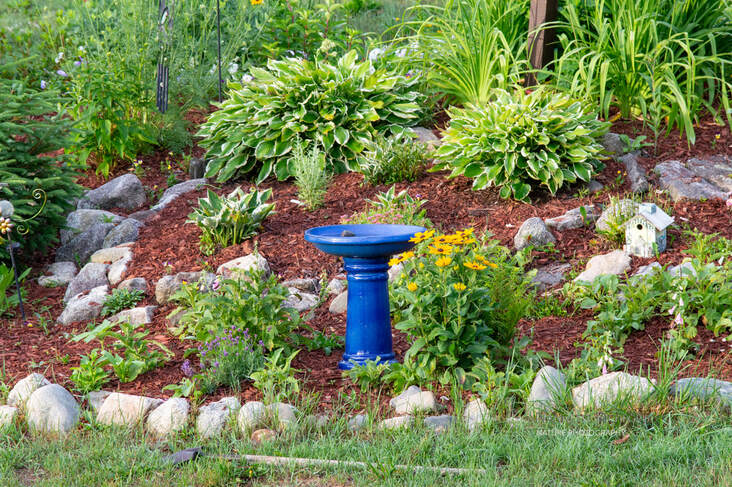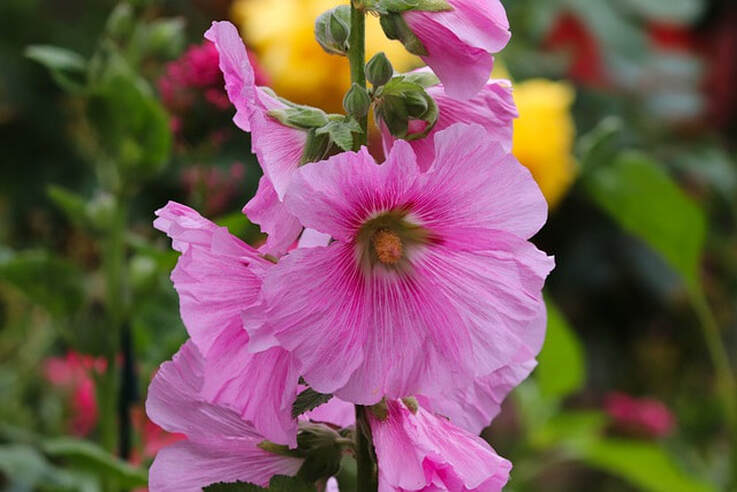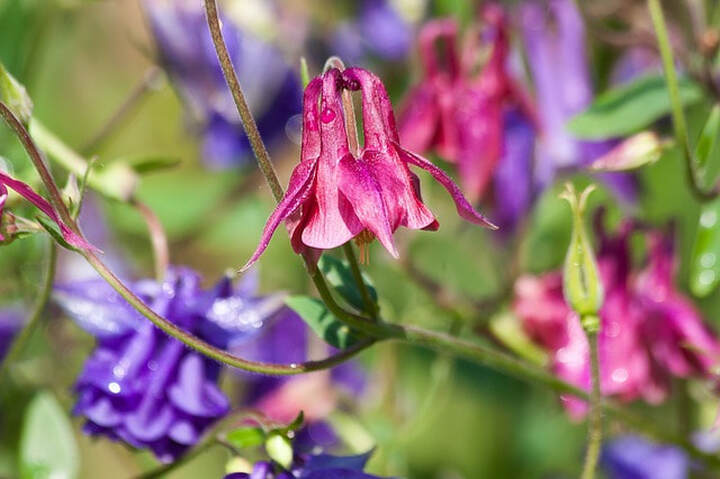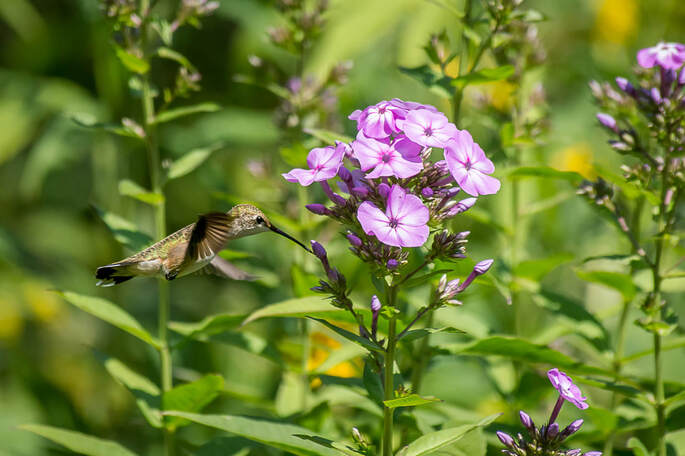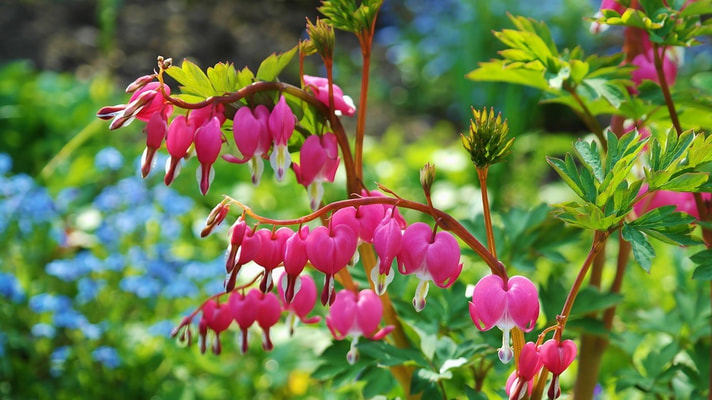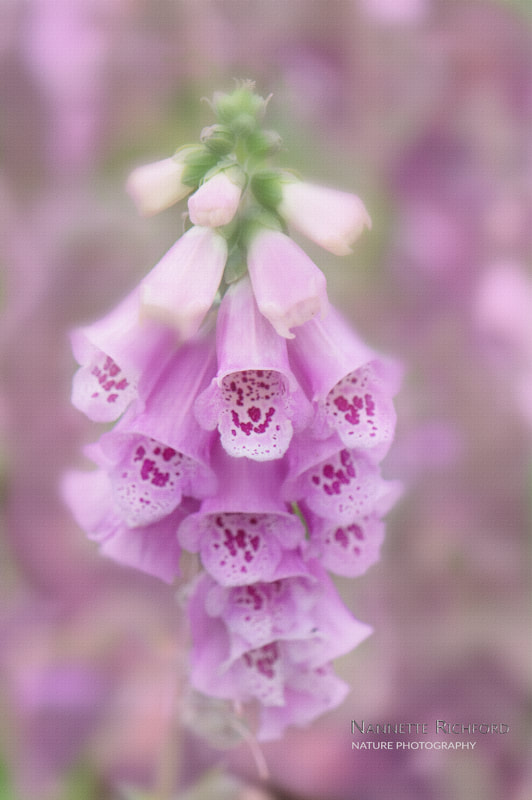Perennials that Attract Hummingbirds
Maine gardens come alive with hummingbirds all summer long when you plant a perennial bed designed with hummingbirds in mind. These flowers return each year with minimal care from you, blooming just in time to provide quick energy for hungry hummingbirds.
What perennials attract hummingbirds?
Hummingbirds prefer brightly-colored flowers that are tubular or cup shaped, but they will visit a wide range of perennials. Some of the best perennials for hummingbirds include hollyhocks, columbine, phlox, bleeding hearts, and foxglove.
Hollyhocks
Hummingbirds love hollyhocks with their bell shaped flowers and bright petals.
Although technically not a perennial, hollyhocks are the mainstay of many cottage gardens in Maine. These flowers bloom on the second year's growth, but because they self-seed readily there are always flowers in bloom.
Flowers open from the bottom of the spire and work their way upward. Petals resemble crepe paper, but are surprisingly hardy.
Plant these towering plants at the back of the flowerbed or along fences to create a dazzling display of color. Hollyhocks prefer full sun and evenly moist soil, but will tolerate dry soil.
Although technically not a perennial, hollyhocks are the mainstay of many cottage gardens in Maine. These flowers bloom on the second year's growth, but because they self-seed readily there are always flowers in bloom.
Flowers open from the bottom of the spire and work their way upward. Petals resemble crepe paper, but are surprisingly hardy.
Plant these towering plants at the back of the flowerbed or along fences to create a dazzling display of color. Hollyhocks prefer full sun and evenly moist soil, but will tolerate dry soil.
Columbine
Columbines provide hummingbirds with a source of food in early spring before many other flowers have bloomed.
These wildflowers can be found throughout Maine growing in partially shaded areas, but they can also be purchased as cultivated varieties. Blooms range from white and shades of pink and rose to rich purple, attracting hummingbirds to your garden.
Columbines bloom in late spring to early summer providing nectar for hummingbirds before other perennials have bloomed. They prefer evenly moist soil and partial shade.
Plant columbine in wildflower gardens, along the border of the lawn, or under shrubs and bushes.
These wildflowers can be found throughout Maine growing in partially shaded areas, but they can also be purchased as cultivated varieties. Blooms range from white and shades of pink and rose to rich purple, attracting hummingbirds to your garden.
Columbines bloom in late spring to early summer providing nectar for hummingbirds before other perennials have bloomed. They prefer evenly moist soil and partial shade.
Plant columbine in wildflower gardens, along the border of the lawn, or under shrubs and bushes.
Garden Phlox
Garden phlox attract hummingbirds in mid-summer.
Garden phlox blooms in midsummer providing hummingbirds with sweet nectar. Old fashioned garden phlox come in magenta and white, but newer varieties range in color from subtle shades of pink, lavender and red with many bi-colors.
Phlox produce a heady, sweet fragrance that scents the night air. Plant phlox in full sun and keep the soil evenly moist, especially during blooming time.
Garden phlox blooms in midsummer providing hummingbirds with sweet nectar. Old fashioned garden phlox come in magenta and white, but newer varieties range in color from subtle shades of pink, lavender and red with many bi-colors.
Phlox produce a heady, sweet fragrance that scents the night air. Plant phlox in full sun and keep the soil evenly moist, especially during blooming time.
Bleeding Hearts
Bleeding hearts provide hummingbirds with a food source in late spring to early summer.
Bleeding hearts thrive in Maine gardens and produce larger plants each year. While some varieties thrive in full sun, others prefer shade or partial shade. The graceful arching branches produce heart-shaped flowers that range in color from white and soft pink to deep red.
While some bleeding heart varieties bloom for a short period in late spring or early summer, other varieties produce an abundance of blooms all summer. Bleeding hearts prefer evenly moist soil.
Bleeding hearts thrive in Maine gardens and produce larger plants each year. While some varieties thrive in full sun, others prefer shade or partial shade. The graceful arching branches produce heart-shaped flowers that range in color from white and soft pink to deep red.
While some bleeding heart varieties bloom for a short period in late spring or early summer, other varieties produce an abundance of blooms all summer. Bleeding hearts prefer evenly moist soil.
Foxglove
Hummingbirds love the tubular shape of foxglove blooms and will spend hours zooming from flower to flower.
Foxglove can be either a perennial or a biennial. Biennials produce a rosette of leaves the first year and bloom the second. When growing foxglove in the garden, there are usually some plants in bloom while new plants are forming the base of the next year's blooms.
These plants range in height from 24 inches to 5 feet or more. The flowers range in color from white, pink and yellow to rich purple and even include peach and salmon.
The individual flowers open along the main stalk, creating a spire of blooms. Plant foxglove at the back of gardens – but use caution with young children and pets, as these plants are toxic if ingested.
Foxglove prefers full or partial sun and evenly moist soil.
Foxglove can be either a perennial or a biennial. Biennials produce a rosette of leaves the first year and bloom the second. When growing foxglove in the garden, there are usually some plants in bloom while new plants are forming the base of the next year's blooms.
These plants range in height from 24 inches to 5 feet or more. The flowers range in color from white, pink and yellow to rich purple and even include peach and salmon.
The individual flowers open along the main stalk, creating a spire of blooms. Plant foxglove at the back of gardens – but use caution with young children and pets, as these plants are toxic if ingested.
Foxglove prefers full or partial sun and evenly moist soil.
